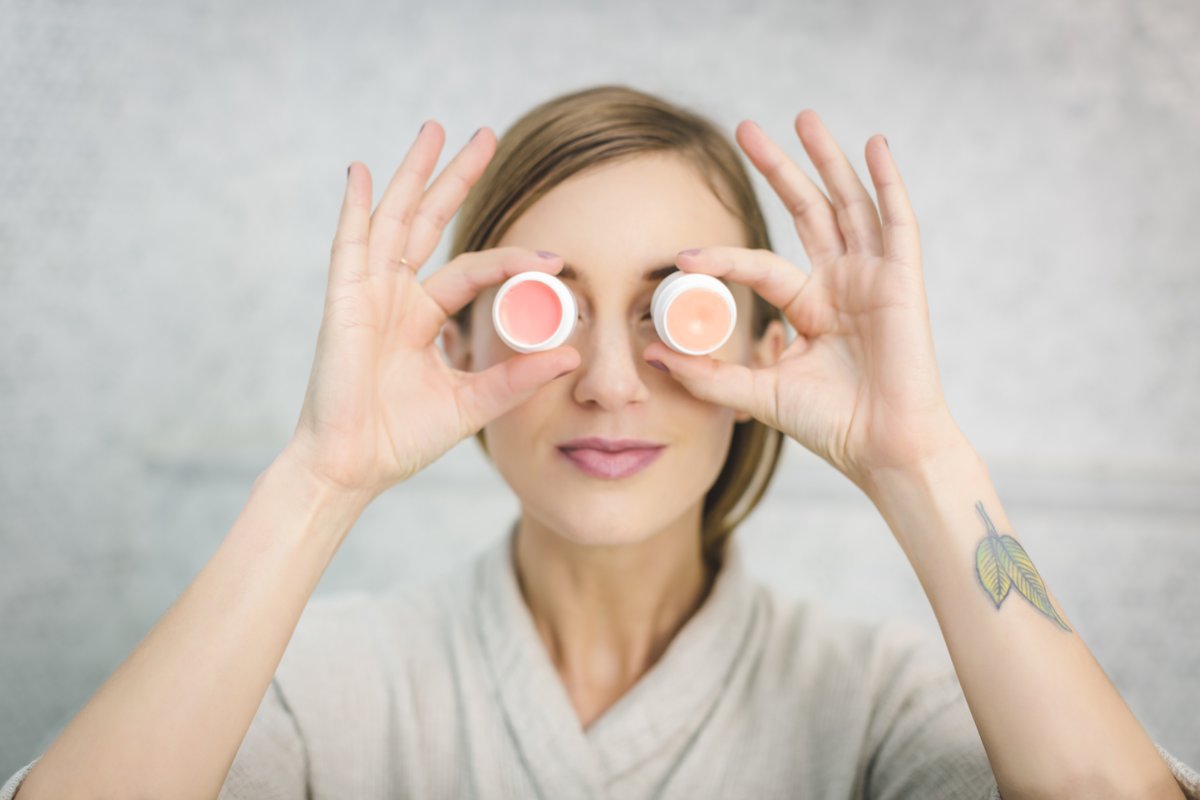These 4 ingredients are the only ones you need to stop acne in its tracks

When you’re dealing with acne, it can be tempting to pile on as many zit-zapping ingredients as possible in the hopes that they’ll come together to magically banish your breakouts. You need them to work fast, and logically a “more-is-more” approach seems like the best way to get the job done. But in reality, that’s not quite the case. Contrary to what you might think, the best way to treat pimples isn’t by going full throttle with every anti-acne product in your arsenal. Instead, it’s about trusting only the best-of-the-best acne ingredients and using them properly to get tried-and-tested results.
The magic number, according to dermatologists? Four. From a product standpoint, that’s generally all it takes to clear your pores, fight inflammation, and stimulate cell turnover to get rid of your current breakouts and fend off future ones. Of course, some situations are more serious than others, and may require attention from a dermatologist to deal with. If the over-the-counter stuff just isn’t doing it for you, be sure to schedule an appointment with a doc. In the meantime, scroll through for the best acne ingredients to stock your arsenal with—your breakouts don’t stand a chance.
Benzoyl Peroxide
Benzoyl peroxide is known to be the most effective OTC acne treatment out there—you probably know it well from the ingredient label of nearly every pimple product you’ve ever used. It lowers the levels of acne-causing bacteria in your pores, otherwise known as Propionibacterium. It also reduces inflammation, which means those big, angry zits are no match for the stuff. Layer it on top of a pimple by way of spot treatment and let it sit overnight for the best results. And one thing to be aware of? Benzoyl peroxide, like many other acne-quashing ingredients, is known to be drying, so be sure to use plenty of moisturizer alongside it.
One of the products you can use is Skinnatra Cleansing Gel. Skinnatra has benzoyl peroxide as one of the active ingredients. Afterward, you can use Skinnatra Moist Cream or Rekano Cream which contain moisturizing and hydrating ingredients.
Retinoids
Retinoids are the gold standard of acne treatments, thanks to their ability to stimulate cell turnover, a process that brings healthy cells to the skin’s surface and pushes the old dead ones off. “For acne-prone skin, speeding up cell turnover can help unclog pores because a lot of what’s clogging your pores is that old, dead, skin, and if you make that happen a little bit faster, it helps open those pores,” says Jason Miller, MD, a New York City dermatologist. “You’re getting so much of this extra gunk collecting in the pores that it builds up, and you need to clear things up and get those layers of clogged keratin, or dead skin cells, out of those pores.” There are varying potency levels of the active ingredient, from the over-the-counter options like retinol and adapalene to the stronger stuff like tretinoin (which you might know by its generic name, Retin-A) that usually needs to be prescribed to you by a doctor.
Salicylic Acid
Salicylic acid has always been a favorite acne-fighting ingredient, a notion agreed upon by most dermatologists. Most dermatologists swear by it, so you know it’s legit as far as zit care is concerned. This particular beta-hydroxy acid crystallizes into a small enough size that it’s able to get deep down into your pores and clear them from the inside out, getting rid of all that dirt, oil, and debris that could be hiding in there and causing your zits. It packs the additional punch of being an exfoliating acid, so it also helps to even skin tone and do away with dark marks and scarring from old breakouts.
In addition to adding these ingredients to your arsenal, this is the single most important thing a dermatologist wants you to know about treating acne.
One of the active ingredients of Skinnatra Cleansing Gel is Salicylic acid. Remember to apply Skinnatra’s Moist Cream after using Skinnatra cleansing gel to avoid dehydration of the skin.
Tea Tree Oil
Tea tree oil extracted from Melaleuca Alternifolia, a tiny tree native to Australia, contains terpinene-4-ol. The compound has both antibacterial properties and anti-yeast properties. This helps with acne because it has been found that the oil has antimicrobial effects on Cutibacterium acnes, a type of bacteria found in healthy normal skin but also known to be involved in acne formation. This is why tea tree oil has been shown to reduce acne, especially inflamed red bumps, and studies have also been conducted according to doctors suggesting that tea tree oil is also helpful in removing non-inflammatory blackheads and whiteheads.
Research also shows tea tree oil triggers the activity of white blood cells, which are key in the healing process. If you're interested in trying out tea tree oil, choosing a product that already has it in its formulation is a smart way to integrate it into your routine. It not only reduces the risk of a DIY catastrophe, but it will also yield other benefits for your skin. Many brands will formulate tea tree oil with other complementary ingredients that gently exfoliate the skin to help eliminate dead skin cells and unblock the pores. Some of the products you can use that contain tea tree oil but also has active ingredients to reduce inflammation is the Skinnatra Soap.
Skinnatra Soap contains Tea Tree Oil as well as Aloe Vera and Glycerin. Both, Aloe Vera and Glycerin, help in moisturizing skin. It also contains panthenol which acts as a hydrating agent.
